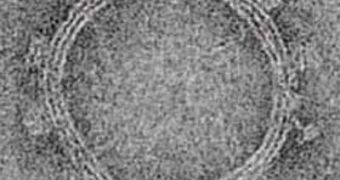In an international collaborative effort by scientists at the Harvard University in the United States and the Technical University of Munich, in Germany, a new method of producing DNA nanostructures has been created. The field of DNA nanotechnology is very promising, and could in the future be used to create structures that behave just like they do inside living cells, with vast implications to a lot of research areas. Details of the new achievement are published in the latest issue of the journal Science.
The innovation addresses one of the most persistent problems in the field, and namely the inability to accurately construct DNA structures at such small scales. But moving past this issue is crucial. If experts manage to crack the puzzle, then this could lead the way to new self-assembling devices, able to generate complex structures inside the human body. These types of so-called machines could be used in medicine to treat illnesses in hard-to-reach places, where conventional vaccine or antibiotics molecules cannot reach because of their size.
They way DNA arranges itself into predefined structures is fairly simple in theory. The acid is made up of four basic nucleotides, named A, T, G, and C. They bind in pairs of two, and only in specific orders – A only binds to T, and C with G. Two DNA strands connect with each other if one of them, for example, has free T and G nucleotides, while the other has A and C.
The self-assembling structures become possible if the sequences of nucleotides that can be found at the ends of a strand are placed there in such a manner that they only combine with a specific other strand. It is thus possible to create complex shapes using nothing more than DNA strands and the natural chemical reactions that occur between them, Technology Review reports.
Harvard University expert Shawn Douglas, who is also a co-author of the Science study, managed to also build a program that assists researchers in creating the intricate 3D DNA shapes. The software is available for free to the public. The team obtained DNA structures shaped like triangles (with either concave or convex sides), and beach balls, with tiny structures on the side. The last structure could act like a wheel inside the body, spinning to make its way to its destination.

 14 DAY TRIAL //
14 DAY TRIAL //